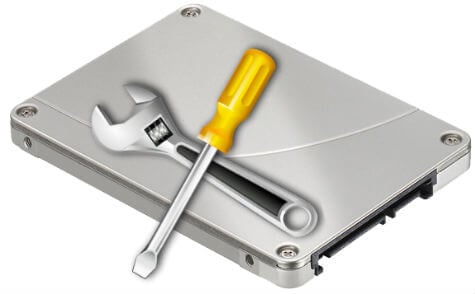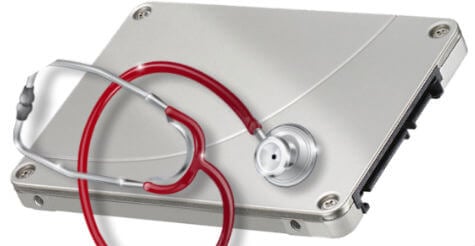SSDs are gradually stealing the market of HDDs. A lot of debates and confusions are going on the topic of how to maximize SSD performance and increase SSD life span. Most of the new Solid State Drive buyers are coming from the Hard Disk Drive world. These switching users like to follow the same maintenance steps for their new Solid State Drives. Unfortunately, if you follow the same maintenance tips for your new SSD, it’ll end up with a wrong outcome and may lead to your SSD’s early death.
There are some conflicting theories about SSD and HDD concerning maintenance and life cycle. For example, we used to do frequent defragmentation on your HDD to improve its performance. But if you do the same with your SSD, that will cause it to degrade the lifespan of your SSD. Even though most of these tips are still going through heated discussions, I tried my best to explain all these conflicts without digging too deep into technical aspects.
Upgrading SSD Firmware Before Starting
SSD Firmware is the brain of the drive, giving instructions to the Controller and work as an interface between your computer hardware and disk drive. This piece of code will take care and handle any error correction such as TRIM. Since SSD is comparatively new technology, manufacturers are trying to improve their firmware day by day by fixing bugs, compatibility, and performance issues.
Related: Best 5 Free Tools to Check Your SSD Health and Monitor Performance
It is critical to keep your SSD firmware up-to-date before you install it on your computer. It is going to be a tedious job to upgrade Drive Firmware once you installed your drive and copied all the data to the new drive. Sometimes it may end up in a drive failure because of the conflict with the new firmware and old hardware of your computer.
Once you bought new SSD, the first thing you have to do is to connect your SSD using USB cable or SATA cable to your current system and perform a firmware update with the help of a SSD manufacturer software.
Do Not Defrag SSD
Conventional HDDs have a spinning mechanism with a header to locate and fetch the required data from the disk. If HDD data scattered everywhere in the disk, the HHD need to spin more. It also needs to spend more time to find out the required information from the platters. While you perform defragmentation, the drive brings all scattered data into one place to improve the performance and reading speed.
In the case of SSDs, there are no mechanical spinning parts to read or write data. SSDs are working with logical circuits based on electrical pulses to read and write data in and out. SSDs are saving the data as blocks, and it can read the blocks anywhere in the drive with same time whether it is scattered or not.
Moreover, You will be overkilling your SSD when you defrag the drive. This defragging process is giving extra efforts to the drive, and that cause to degrade your SSD’s life. In the latest versions of the Windows and MAC OS, they can detect what type of drive is installed in their system, and can be turned off automated defragmentation.
Enable SSD TRIM or Not?
Before I answer this question, we should know what TRIM is. A Trim command (commonly typeset as TRIM) allows an operating system to inform a solid-state drive (SSD) which blocks of data are no longer considered in use and can be wiped internally. Trim was introduced soon after SSDs were introduced. (Wikipedia)
Since this function depends on various factors like OS, Device Firmware, and Manufacturer, the answer is a Yes and No. For an example, if you are using an old SSD in Windows XP, you need to depend on an additional Trim software; otherwise, the performance will downgrade day by day by cluttering all unwanted data in your drive.
But the modern SSDs are coming with their Garbage Collection Mechanism. It can do its garbage collection automatically during the drive idle mode. In these drives, the firmware is capable of taking care of the TRIM inside the drive itself. In addition to this, If you have the latest MAC or Windows OS, then the OS will take care of TRIM itself, and you don’t need to worry about it.
Do Not Wipe SSD
Mechanical HDDs are marked sectors as deleted while a user performs a delete command, but the data is not removed from the drive. These marked data can quickly be recovered with a data recovery tool. A data wiping software will overwrite 0s and 1s on these sectors of HDD to make sure it has data completely wiped out from disk and free from recovery.
SSDs are working with TRIM support either from OS or firmware. In SSD, when you delete, the OS or firmware it will force the SSD to delete the data with the TRIM command and the data will be deleted entirely and can’t be recovered. If you use any wiping software on SSD, it is going to degrade your SSD life since the wiping software is going to write your SSD’s empty space with 1s and 0s and consume a full write cycle to accomplish this.
Do Not Fill SSD To Full Capacity
SSDs may suffer a performance issue, especially in writing speed when the drive reaches full capacity. The logic is simple when you have a lot of free space, and it is easy to perform data written on empty cells. When the drive is full, SSD needs to find out the partially filled blocks and move back data to cache, and write back to drive. This is going to be a time-consuming effort while we consider the file size in MBs.
It is better to have 25% of your space set aside as free and only consume 75% of the drive space to keep the right balance between performance and space utilization.
Do Not Use SSD with Large Files
It is not ideal to use your SSD for your large media files such as movie files and other media files. Since every writing matter to SSD life and especially larger files cause to quickly consume your writing cycle quota that ends up SSD life early.
Moreover, your media files don’t need a high-speed offer by SSD. You are not going to recognize the difference in speed when you play movies from HDD or SSD.
Disable Hibernation in Windows
Windows creates a file and writes entire OS memory into that file in every time you hibernate. When you have SSD to write this file, it can be an overburden for your SSD and degrade life.
Bonus Tips for SSD Maintenance
The above list we covered most of the important things you need to take care with your SSDs. But here are a few more tips that worth mentioning.
Let HDD Handle Temp Files, Not SSD
Your system and browsers are writing temp files every time you astral any activity with it. Since these files are creating very frequent, it is additional overhead to your SSD if you set to write in SSD. If you are using two drives on your PC, it is recommended to set temp files to write to HDD. You need to set each application like internet explorer, gimp, etc. to write temp files into HDD.
No Pagefile to SSD.
Pagefile will write 2-4gb depends on the size of your RAM. If you use your SSD as the location for Pagefile, it degrades your SSD life. Better, to turn it off or move the location of the page file to HDD if you have a secondary drive in your machine.
Turn Off Indexing
SSD drives are very fast, and it does not need any indexing to find files like conventional HDD.
The best approach is to keep SSD to install for your Operating system and Applications that you frequently use. If you have a laptop or desktop PC with both SSD and HDD drives, set your HDD as a secondary drive and save your large size files and media files into HDD drive instead of SSD.

If do not do all these things then I don’t know how SSD can be useful without hurting it.
Thank you for sharing this very nice post awesome keep sharing.
Also move your Firefox cache to HDD to limit the writes on SSD significantly.
Very Essential and Crucial Tips for the Health and Long Life of SSD’s, all summed up neatly in a single article!
An Asus EeePC 900 with Windows XP has been kept in the shelf for long, I brought it to life and I’m very grateful to you 💕! A very nice job, please keep it up!
Thank you!